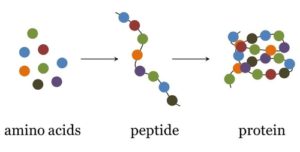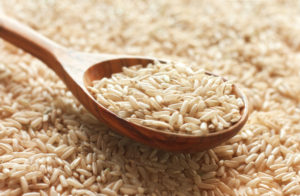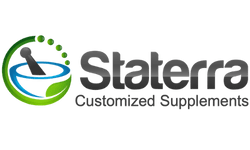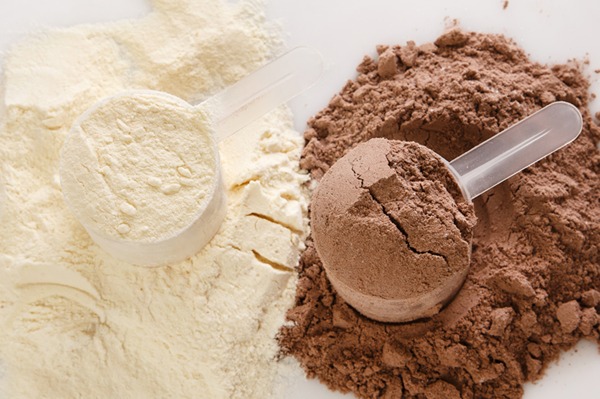What is protein…exactly…
Before we can delve into high quality protein and understand why it is so important, we first need to take a quick look at what exactly protein is and how your body uses it.

To try and put this as simply as possible, the cells in your body use the protein you eat to build the proteins they need to perform all the functions of life. Proteins are the work horses of cells; they make energy, eliminate waste and even help cells “talk” to each other. All of these hard-working proteins are made up of smaller pieces, called amino acids. Think of how beads on a string form a necklace; this is how amino acids form protein. When you consume protein in your diet, your body breaks them apart, absorbs the amino acids and then builds any of the protein you need to survive.
So, eating protein is really about getting the amino acids your body needs. Of the amino acids, there are nine amino acids that are considered essential. This means that your body cannot make them, they must be consumed in your diet. From these nine amino acids, all the other amino acids can be produced.
What is considered a high-quality protein?
High quality protein should contain all nine essential amino acids in ratios similar to recommended daily amino acid requirements.
Why is high quality protein so important?
Your body does not store amino acids the way it stores fat or carbohydrates. This makes it very important to have adequate protein intake, every day. If you don’t have enough amino acids to build the proteins your body needs to make, you can’t function optimally. High quality protein is essential for good health and athletic performance; the amount can vary in an individual and sport specific manner. Protein should be consumed based on grams per kilogram of body weight and not by gender. Check out our previous blog for more information.
What should I look for in a protein supplement?
The most popular type of protein supplement is a whey based supplement. Whey products are popular because they are high in essential amino acids and are rapidly absorbed by the body. This makes them a great product to use for post workout recovery. The gold standard of whey protein is the New Zealand whey protein isolate. This product boasts a minimum 90% protein content and is derived from the milk of cows that are artificial hormone and antibiotic free, grass fed and allowed to roam. In addition, this product has the highest content of “undenatured” protein, which means the proteins are in their most intact, natural state.
There are various vegan proteins now on the market for vegans or those who can’t have dairy.  When selecting a vegan protein, look for an organic, non-GMO option that does not use harsh chemicals during processing. Vegan proteins are absorbed more slowly than whey, which makes them a good option for those with digestive issues. Finally, most people avoid soy proteins due to their estrogenic effect.
When selecting a vegan protein, look for an organic, non-GMO option that does not use harsh chemicals during processing. Vegan proteins are absorbed more slowly than whey, which makes them a good option for those with digestive issues. Finally, most people avoid soy proteins due to their estrogenic effect.
Regardless of type of protein, look for something with natural flavouring and stevia as a sweetener. Keep in mind that even the most natural, high quality flavouring will contain ingredients like guar gum, silicon dioxide and maltodextrin to ensure the product doesn’t clump up and has a nice texture when mixed with a beverage. If you are sensitive to any of these ingredients (they often are not even listed on the label), err on the side of caution, go with an unflavoured option and mix it in a smoothie.
Guidelines for protein intake
- To get the most out of post workout refueling, consume your protein with some simple carbohydrates. This aids absorption and provides your hungry muscles some instant food, preventing further muscle breakdown.
- Distribute your protein intake evenly throughout the day (Check out this post for details)
- Your protein intake should be high quality protein
- Active older individual must maintain high quality protein consumption to ensure preservation of their muscle mass.
Here is a list of some protein sources, click the protein to see our favourite recipes!
High-Protein Meat
Steak (Top Or Bottom Round)
Protein: 23 g per 3 oz. serving
Good to Know: Leaner cuts of steak like round and loin will become drier than other cuts, so prepare them quickly over high heat to just medium-rare.
Ground Beef (95% Lean)
Protein: 18 g per 3 oz. serving
Good to Know: If you’ve got some extra cash in your wallet, opt for grass-fed beef, which is more nutrient-dense than its factory-farm counterparts.
Chicken Breast (Boneless And Skinless)
Protein: 24 g per 3 oz. serving
Good to Know: This staple delivers more protein than other poultry cuts, making it a great high-protein option.
Protein: 24 g per 3 oz. serving
Good to Know: If you’re concerned about antibiotic use in large-scale poultry farming, you can look for turkey breast labelled “antibiotic-free.”
High-Protein Seafood
Yellowfin Tuna
Protein: 25 g per 3 oz. serving
Good to Know: When possible, look for troll- or pole-caught tuna, which are the most sustainable options.
Halibut
Protein: 23 g per 3 oz. serving
Good to Know: Pacific halibut is generally considered a more sustainable choice than Atlantic.
Octopus
Protein: 25 g per 3 oz. serving
Good to Know: Frozen octopus actually has an advantage over fresh because the subzero process works to help tenderize the meat.
Sockeye Salmon
Protein: 23 g per 3 oz. serving
Good to Know: Not only does wild salmon like sockeye taste better than its farmed cousin, it also supplies about 25 percent more protein.
Tilapia
Protein: 21 g per 3 oz. serving
Good to Know: Look for American-farmed tilapia, which is a safer choice than tilapia imported from Asia.
High-Protein Vegetarian Options
Tofu
Protein: 12 g per 3 oz. serving
Good to Know: Slices of firm tofu work well in stir-fry, or try slapping them onto the grill to infuse them with some smoky flavor.
Soba Noodles
Protein: 12 g per 3 oz. serving
Good to Know: These gluten-free Japanese-style noodles contain more protein than most wheat-based noodles. Even better, they cook in about half the time as whole-wheat pasta.
Protein: 8 g per 1/2 cup serving
Good to Know: Season with fresh lemon juice, smoked paprika, and a whisper of salt for an awesome mid-day snack.
Protein: 8 g per 1 cup serving
Good to Know: Toasting quinoa in a dry skillet or saucepan before simmering it in water can enhance its natural nutty flavor.
Peanut Butter
Protein: 8 g per 2 tbsp serving
Good to Know: Go for the all natural (ideally organic stuff), and forget the reduced-fat versions. All they do is replace the healthy fat with not-so-healthy sugar.
Mixed Nuts
Protein Power: 6 g per 2 oz. serving
Raw nuts like almonds, cashews, and pistachios make for a crunchy way to add more protein and healthy unsaturated fats to your diet.
Good to Know: Look for packages labelled “unsalted”.
Eggs (For those ovo-vegetarians & carnivores alike)
Protein Power: 6 g per 1 large egg
Good to Know: The biological value (a measure of how much protein from the food can be incorporated into proteins in the body) of an egg is higher than that of nearly any other item in the grocery store.
References:
Phillips SM1, Van Loon LJ. Dietary protein for athletes: from requirements to optimum adaptation. J Sports Sci. 2011;29 Suppl 1:S29-38.
Mamerow MM, Mettler JA, English KL, et al. Dietary protein distribution positively influences 24-h muscle protein synthesis in healthy adults [published online January 29, 2014]. J Nutr.
Poole C, Wilborn C, Taylor L, Kerksick C. The role of post-exercise nutrient administration on muscle protein synthesis and glycogen synthesis. J Sports Sci Med. 2010;9(3):354-363.
Phillips SM. Dietary protein requirements and adaptive advantages in athletes. Br J Nutr.
2012;108(Suppl 2):S158-167.

